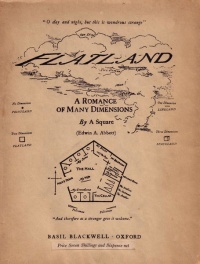1884
From The Art and Popular Culture Encyclopedia

|
"What is the use of moving, when one can travel on a chair so magnificently? […] An overwhelming aversion for the trip, an imperious need of remaining tranquil, seized him with a more and more obvious and stubborn strength."--À rebours (1884) by Joris-Karl Huysmans "Imagine a vast sheet of paper on which straight Lines, Triangles, Squares, Pentagons, Hexagons, and other figures, instead of remaining fixed in their places, move freely about, on or in the surface, but without the power of rising above or sinking below it, very much like shadows—only hard and with luminous edges—and you will then have a pretty correct notion of my country and countrymen." --Flatland (1884) by Edwin Abbott Abbott |
_-_Lucien-Marie_Gautier.jpg)
|
Related e |
|
Featured: |
1884 is the 884th year of the 2nd millennium, the 84th year of the 19th century, and the 5th year of the 1880s decade.
Contents |
Politics
- November 15 – The Berlin Conference, which regulates European colonisation and trade in Africa, begins (ends February 26, 1885).
Art and culture
- February 2 - Les XX, a Belgian collective of artists hold their first joint exposition
- Sigmund Freud publishes "On Coca" on the uses of cocaine. He reports feeling "exhilaration and lasting euphoria."
- The fourth exhibition of the Incoherents
- May 15 - First Salon des Indépendants in Paris
Music
- First composition of Erik Satie
Literature
- À rebours by Joris-Karel Huysmans
- Flatland by Edwin A. Abbott
- Princess Napraxine by Ouida (Marie Louise de la Ramée)
- Monsieur Vénus by Rachilde
- Le Vice suprème by Joséphin Péladan
- Adventures of Huckleberry Finn by Mark Twain
- Les poètes maudits by Paul Verlaine
Non-fiction
- Kryptádia Vol. 2
- From the Christiania Bohemians by Hans Jæger
- Über Coca by Freud
Visual culture
- Biblis - William-Adolphe Bouguereau
- Les champignons considérés - Lucien-Marie Gautier
- Illustrations by Gustave Doré to The Raven [1]
- George Eastman developed dry gel on paper, or film, to replace the photographic plate, making photography portable.
- Study of Buttocks (c. 1884) by Félix Vallotton
Births
- Gaston Bachelard (1884 - 1962)
- Max Beckmann (1884 - 1950)
- Yevgeny Zamyatin (1884 - 1937)
- Otto Rank (1884-1939)
- Frank Rudolph Paul (1884 - 1963)
- Werner Krauss (1884-1959)
- Amedeo Modigliani
- William Seabrook, Writer, journalist, occultist and explorer (d. 1945)
Deaths
- Xavier Forneret, French writer and poet (b. 1809)



